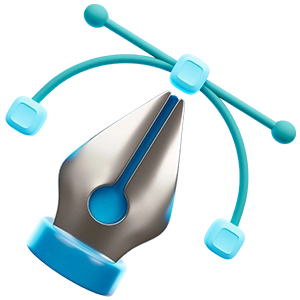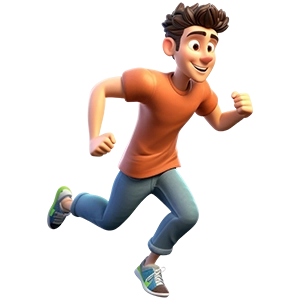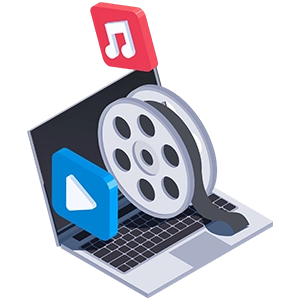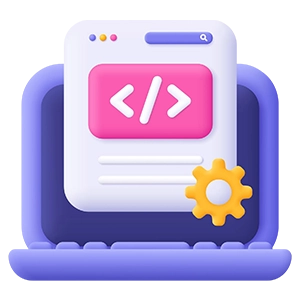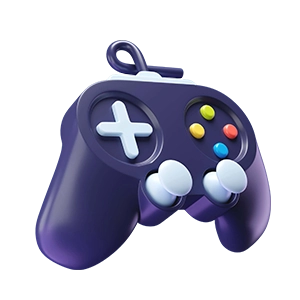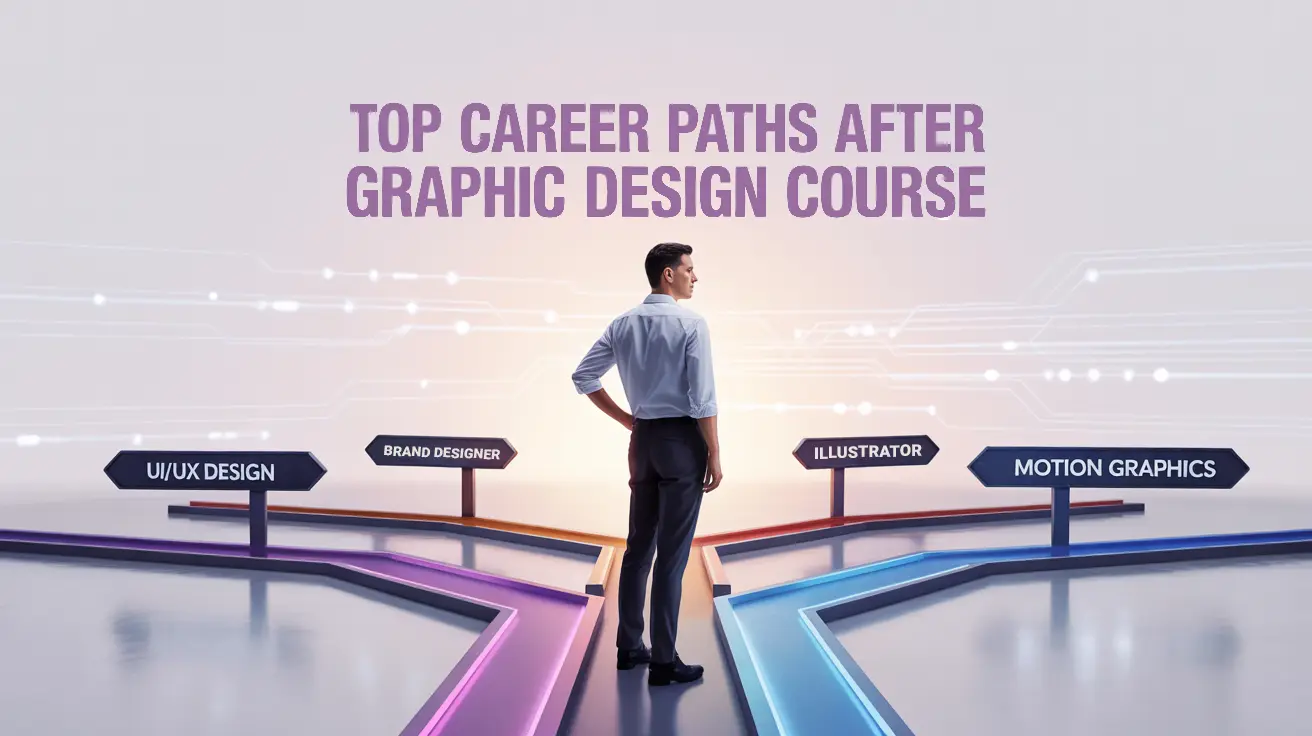In 2025, the design industry is more dynamic than ever—thanks to a surge in demand for digital content, branding, and interactive experiences. Completing a graphic design course is no longer limited to static visuals; it’s your entry into a wide range of creative professions. Whether you’re passionate about branding, motion graphics, AI tools, or UI/UX design, there are graphic design career options suited for every talent.
In this detailed guide, we explore the most promising jobs after graphic design course, current graphic design job roles 2025, tools you’ll use, industries hiring now, and the typical career path you can expect after training. If you’re researching your graphic design course career path, this breakdown will help you decide your next move.
1. Graphic Designer
One of the most versatile career paths after graphic design course completion.
What You Do:
As a graphic designer, you are the visual communicator behind a brand’s message. Your job is to create compelling visuals across various formats—ranging from digital banners, social media graphics, and email creatives to print materials like brochures, flyers, and posters. You bring concepts to life through layout design, typography, iconography, and image editing.
A generalist graphic designer must be comfortable handling multiple projects at once and adapting styles to suit different brands, audiences, and platforms. You’ll often collaborate with content writers, marketers, and UI/UX teams to ensure your visuals align with the larger communication goals of the project. Whether designing for a digital campaign or creating corporate presentations, consistency, creativity, and clarity are your top priorities.
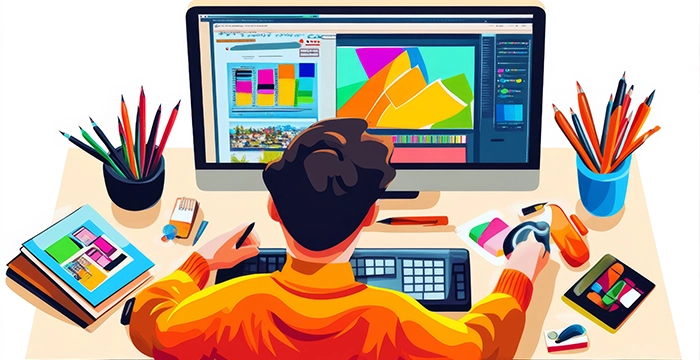
Industries You Work In:
Graphic designers are in demand across tech startups, marketing agencies, publishing, e commerce, education, and even healthcare. As one of the most accessible and flexible career paths after graphic design course, this role offers opportunities in both full time employment and freelance gigs making it perfect for entry level creatives.
Key Tools:
Photoshop, Illustrator, InDesign, Canva Pro
2. Branding & Identity Designer
A strategic graphic design career option for creatives who love crafting memorable brand identities.
What You Do:
As a Branding & Identity Designer, your primary responsibility is to shape how a brand looks, feels, and is remembered by its audience. You develop a cohesive visual identity that includes logos, color palettes, typography, iconography, packaging, and brand guidelines.
This goes far beyond creating a logo—it’s about crafting a full visual language that communicates a brand’s personality, values, and positioning in the marketplace. From designing mood boards and presentation decks to refining tone and imagery across print and digital touchpoints, branding designers are involved at every stage of brand development and redesign.
Your role also includes collaborating closely with marketing, content, and product teams to ensure visual consistency across all media. A great branding designer understands storytelling, psychology, and strategy—translating a company’s mission into a memorable identity that resonates with the target audience. Whether it’s launching a new brand or evolving an existing one, your work directly influences customer perception, trust, and brand loyalty.
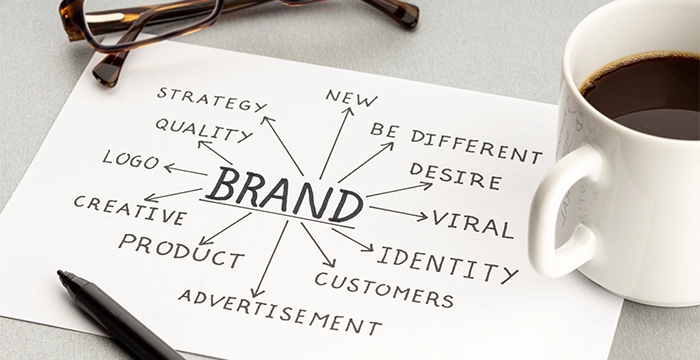
Industries You Work In:
As one of the most in demand graphic design career options in 2025, branding designers find work in retail, FMCG, startups, tech, agencies, and lifestyle brands. Every business with a customer facing presence needs strong branding to differentiate and connect.
Key Tools:
Photoshop, Illustrator, InDesign, Canva Pro
3. UI/UX Designer
One of the fastest-growing graphic design job roles in 2025, combining creativity with usability.
What You Do:
As a UI/UX Designer, your role goes far beyond making things look visually appealing—you are responsible for shaping how users interact with digital products. This includes designing intuitive user interfaces (UI) and crafting seamless user experiences (UX) across websites, mobile apps, software, and interactive platforms.
You conduct user research, create wireframes, develop prototypes, and collaborate with developers and product managers to ensure the final product is not only functional but also user-friendly and engaging. Your job involves balancing visual design with usability, accessibility, and performance to optimize how users navigate a product. A successful UI/UX designer puts user needs at the center of every design decision, using data-driven insights to improve workflows and interface interactions.

Industries You Work In:
UI/UX designers are essential in tech startups, SaaS platforms, e-commerce, fintech, healthtech, and edtech companies. As one of the top Graphic Design Job Roles in 2025, this career is ideal for those who love solving problems creatively while impacting digital experiences.
Key Tools:
Figma, Adobe XD, Sketch, Photoshop
4. Social Media Designer
Craft visuals that drive engagement and build online presence.
What You Do:
As a Social Media Designer, your core responsibility is to craft visually engaging content that captures attention and drives interaction across platforms like Instagram, Facebook, LinkedIn, X (formerly Twitter), and YouTube. You’ll design everything from daily posts, stories, and carousel graphics to promotional banners, ad creatives, thumbnails, and reels.
In today’s fast-paced digital environment, your designs need to be not only eye-catching but also strategically aligned with brand goals—whether that’s boosting engagement, increasing followers, or converting viewers into customers. You’ll often work closely with content strategists, social media managers, and copywriters to ensure your visuals amplify the brand’s voice and message effectively.

Industries You Work In:
This is one of the most in-demand jobs after a graphic design course, especially in industries like fashion, lifestyle, e-commerce, edtech, and entertainment. Social media design is essential for any brand with a digital presence—be it startups, influencers, agencies, or global brands.
Key Tools:
Canva Pro, Photoshop, Illustrator, Premiere Pro
5. Motion Graphics Designer
With the rise of Reels, Shorts, and video marketing, motion design is a top career after graphic design course. You’ll animate logos, text, transitions, and create short-form video assets.
What You Do:
As a Motion Graphics Designer, you bring static visuals to life through animation and visual effects. Your role goes beyond just moving images—you craft compelling stories, add rhythm to visuals, and build emotionally resonant content using motion. You might animate logos, design explainer videos, create visual transitions for brand campaigns, or develop kinetic typography and visual effects for ads.
Whether you’re working on short-form social media reels or complex video intros for films and presentations, your job is to make graphics move with purpose and polish. This role often requires deep collaboration with video editors, copywriters, and creative directors, ensuring that the animation aligns with the brand’s tone and message. Knowledge of timing, sound synchronization, and visual flow is essential, as you’re often the one turning ideas into engaging, high-impact visual experiences.
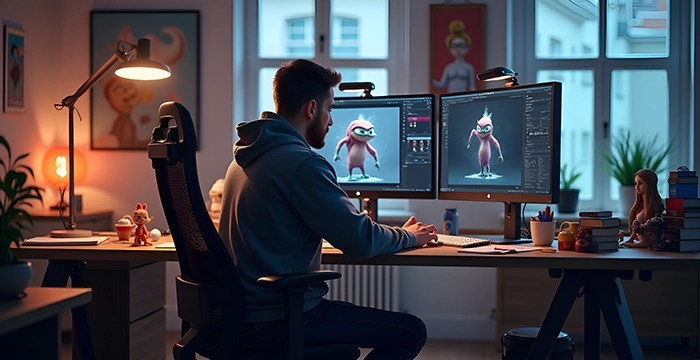
Industries You Work In:
Motion graphics designers are in high demand across entertainment, marketing, tech, and edtech sectors. With the rise of Reels, YouTube Shorts, and OTT platforms, this graphic design career option has become essential for brands seeking to capture attention in motion-rich content environments.
Key Tools:
After Effects, Premiere Pro, Adobe Animate, RunwayML
6. AI-Based Graphic Designer / Creative Technologist
One of the most exciting emerging career paths after graphic design course in 2025. This role is redefining the graphic design course career path by blending creativity with artificial intelligence.
What You Do:
As an AI-Based Graphic Designer, you fuse artistic intuition with the power of AI to create high-volume, high-impact designs at lightning speed. Rather than designing every asset manually, you co-create using tools like Adobe Firefly, Midjourney, RunwayML, and Ideogram. You’ll generate concept art, automate visual content production, enhance layouts, and build brand assets all by mastering AI prompt writing and curation.
Your daily work may include designing social campaigns using Firefly’s generative fill, moodboarding with Midjourney’s stylized outputs, or refining AI drafts in Photoshop and Illustrator. This hybrid creative-tech role is rapidly becoming a top choice in the evolving graphic design job roles 2025 landscape.
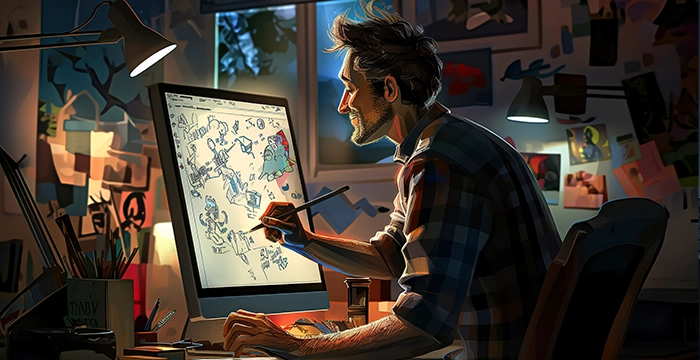
Industries You Work In:
AI-based designers are in strong demand across:
AI-focused creative tech startups
Ad agencies and branding firms
Content-heavy sectors like e-commerce and edtech
Game development and concept art studios
Media production houses
Innovation labs in corporate environments
Even traditional industries—such as real estate, publishing, and education—are exploring AI-generated visual workflows, making this role a futuristic yet practical graphic design career option.
Key Tools:
Adobe Firefly, Midjourney, RunwayML, Ideogram
7. Visual Content Designer / Infographic Specialist
Turn complex data into stunning visuals presentations, dashboards, infographics, and corporate reports.
What You Do:
As a Visual Content Designer, your primary role is to transform complex ideas, data, or processes into clear, engaging, and visually impactful content. This includes designing infographics, pitch decks, presentations, explainer graphics, dashboard visuals, reports, and data visualizations. You act as a bridge between information and audience understanding, using visual storytelling techniques to make content both aesthetically appealing and easy to digest. In this role, attention to typography, layout, visual hierarchy, and the ability to simplify dense data into compelling visuals is essential. Whether you’re illustrating a market trend, visualizing customer insights, or creating a social infographic for a brand, your designs help businesses communicate more effectively with their stakeholders and audiences.

Industries You Work In:
Visual Content Designers are in demand across a wide range of industries that rely on data-driven communication and storytelling. Common sectors include B2B SaaS companies, fintech firms, consulting agencies, healthcare providers, marketing teams, educational platforms, government organizations, and media houses. You may also find opportunities in startups that require pitch decks and product roadmaps, or in corporate settings where internal communications and performance dashboards need clear design.
As the world becomes more data-heavy and presentation-focused, your ability to craft well-structured visual content becomes a crucial asset across sectors where clarity and design must go hand in hand. For those looking at the graphic design course career path, this specialization offers long-term growth and the opportunity to work on high-visibility projects that influence decisions and drive communication.
Key Tools:
Illustrator, Figma, Visme, Canva, Google Charts
8. Print & Publication Designer
From book layouts and posters to FMCG packaging and catalogs this traditional role is still highly relevant in sectors like publishing, retail, and manufacturing.
What You Do:
As a Print & Publication Designer, your role revolves around creating visually engaging layouts for a variety of print materials such as books, magazines, newspapers, brochures, posters, flyers, business cards, and packaging. You ensure a perfect balance of typography, imagery, and layout principles, while also preparing designs that meet print production standards like trim, bleed, and color accuracy.
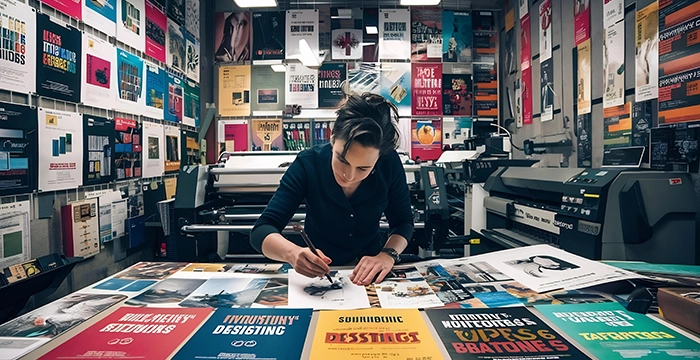
Industries You Work In:
Print & publication designers find opportunities in a variety of industries that still rely heavily on tangible media. This includes publishing houses producing books, magazines, and journals; marketing agencies creating promotional materials for clients; packaging companies that need detailed dieline-based artwork; and corporate communication teams developing annual reports, internal magazines, and branded documentation. Additionally, sectors such as education, healthcare, event management, and even NGOs require professionally designed print materials for outreach, learning resources, and campaigns. Despite the rise of digital media, the demand for high-quality print design remains strong in sectors where tactile experiences, brand trust, and offline marketing still play a significant role.
Key Tools:
InDesign, Illustrator, CorelDRAW, Photoshop
9. Web Designer
Designing website layouts and page templates for corporate sites, e-commerce platforms, or personal brands.
What You Do:
As a web designer, your core responsibility is to design visually appealing and highly functional websites that align with a brand’s goals and user expectations. You work on layout design, typography, color schemes, image placement, navigation flow, and interactive elements ensuring that every web page is both aesthetically engaging and user-friendly. Modern web designers also prioritize responsive design, meaning your layouts must adapt seamlessly across devices like mobiles, tablets, and desktops. In many cases, web designers collaborate closely with developers, copywriters, marketers, and UI/UX professionals to deliver a cohesive digital experience. With the rise of tools like Figma, Webflow, and WordPress, even non-coding designers are now empowered to prototype or build full websites without touching a single line of code.

Industries You Work In:
Web designers are in high demand across virtually every industry in today’s digital economy. As part of the graphic design course career path, web design offers one of the most versatile and future-ready roles for creatives. E-commerce companies rely on designers to craft product pages and checkout experiences that drive sales. Marketing agencies need professionals to build landing pages that convert traffic into leads. Tech startups and SaaS businesses require intuitive, fast-loading interfaces to keep users engaged. For those exploring jobs after graphic design course, web design provides endless opportunities across educational institutions, event companies, NGOs, personal brands, and even traditional brick-and-mortar businesses. Whether working in-house or as a freelancer, web designers play a vital role in building and maintaining the digital presence of businesses large and small.
Key Tools:
Figma, Webflow, WordPress, Adobe XD
10. Creative Director (Growth Role)
Lead teams, shape visual strategies, pitch campaigns, and drive brand innovation. A top-tier role in the Graphic Design Course Career Path.
What You Do:
As a Creative Director, you are the visionary leader behind a brand’s visual storytelling. You conceptualize and oversee the execution of high-level design strategies across digital, print, and multimedia platforms. From leading campaigns and developing brand systems to managing cross-functional design teams, this role blends creativity with business leadership. It’s the ultimate evolution in the graphic design course career path, reserved for professionals with years of experience, strategic insight, and strong communication skills.
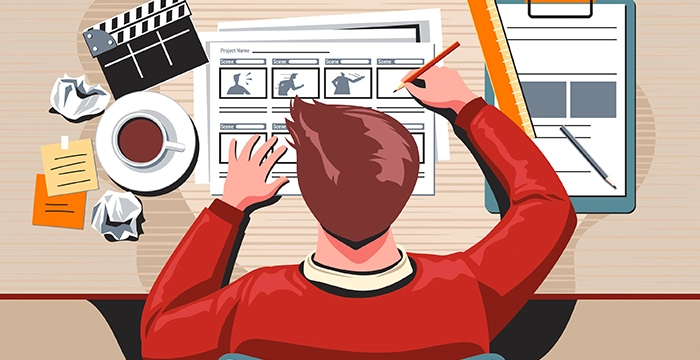
Industries You Work In:
Creative Directors are in high demand across a wide spectrum of industries that rely on strong branding and visual communication. You’ll find opportunities in advertising agencies, marketing firms, fashion and lifestyle brands, tech startups, film and media houses, publishing companies, e-commerce platforms, and entertainment networks. In 2025, digital-first companies—including SaaS brands, D2C e-commerce, and content creators—are actively seeking creative leaders to steer their design vision across multiple channels. With more businesses focusing on immersive brand experiences and omnichannel design strategies, the role of a Creative Director has expanded beyond traditional media into digital innovation, experiential marketing, and even AI-powered content creation.
Bonus Roles Based on Specialization:
- Packaging Designer
- Concept Artist (for film & gaming)
- E-Learning Designer
- YouTube Thumbnail Designer
- Advertising Art Director
Why Graphic Design is a Smart Career Choice in 2025
If you’re evaluating career paths after graphic design course, here are reasons why now is the right time:
High Demand: Digital-first companies in India and globally are hiring for every major graphic design job role 2025.
Freelancing Opportunities: Work remotely with clients on platforms like Upwork, Fiverr, and Behance.
Short Learning Curve: Even a 3–6 month design course can launch your career.
Creative Freedom: Work in industries like gaming, film, fashion, and AI-powered content creation.
Conclusion
Whether you want to be a motion designer for a YouTube brand, a UI/UX expert in a SaaS startup, or a freelance social media designer crafting viral visuals your opportunities are limitless.
The diversity of graphic design job roles in 2025 means you can align your skills with both passion and market demand.
From high-growth roles in tech to freelancing across borders, each graphic design course career path opens new ways to earn, express, and grow.
If you’ve completed or are planning to join a course, the roadmap is clear: specialize, build a portfolio, and choose a role that suits your strengths.
In short, now is the perfect time to explore jobs after graphic design course completion and step into the future of visual communication.
FAQ
After completing a graphic design course, students can explore multiple career paths such as UI/UX Designer, Visual Designer, Motion Graphics Artist, Brand Identity Designer, Packaging Designer, and Art Director. These roles cater to both digital and print media, offering dynamic growth across industries.
As a fresher, you can start as a Junior Graphic Designer, Visual Content Creator, or Digital Illustrator. Many also land roles in social media design teams, ad agencies, or tech startups. Freelancing is also a strong entry point to gain real-world experience and build a portfolio.
In 2025, top graphic design career options include UI/UX Design, Motion Design, Brand Strategy, and Creative Technology. With AI tools and immersive media becoming mainstream, designers with hybrid skills are in high demand across industries like e-commerce, gaming, edtech, and digital marketing.
High-growth roles in 2025 include UI/UX Designer, Motion Graphic Designer, and Creative Director. These positions require not just design skills but also knowledge of user behavior, animation tools, and branding strategy—making them valuable and well-compensated.
A typical graphic design course career path begins with a junior designer role, progresses to mid-level positions like Visual Designer or UI Designer, and can lead to senior roles like Art Director or Creative Lead. With experience, many also transition into freelancing, consulting, or starting their own design studio.
Yes! Freelancing is one of the most flexible and rewarding career paths after graphic design course completion. Many clients seek freelance designers for branding, web graphics, social media content, and packaging. With the right portfolio and networking, you can build a successful freelance design career.
Key industries include advertising, digital marketing, e-commerce, gaming, entertainment, and tech startups. These sectors offer exciting graphic design career options and are constantly on the lookout for skilled creatives to handle branding, UI/UX, and visual storytelling.
Absolutely. Many designers evolve into UI/UX roles by gaining experience in user interface tools and understanding user behavior. It's one of the most in-demand graphic design job roles 2025 and offers strong growth and salary potential.
Specialization helps you stand out in the competitive market. Whether it's motion design, UI/UX, branding, or packaging, focusing on a niche can accelerate your graphic design course career path and increase your value to employers or clients.
Mastery of tools like Adobe Creative Suite, Figma, After Effects, and basic understanding of UX principles can boost your chances. Strong communication, creativity, and project management also help land better jobs after graphic design course completion.
🎓 Need Help Creating a Portfolio?
Join our
or
build more than just skills—you’ll build confidence and a real portfolio that gets noticed.
- Learn Adobe Photoshop, Illustrator, InDesign & Figma
- Work on real-world design briefs
- Get one-on-one portfolio feedback
- Build a client-ready digital portfolio
- Learn how to present and pitch your work confidently
Turn your creativity into a career that’s future-proof.

